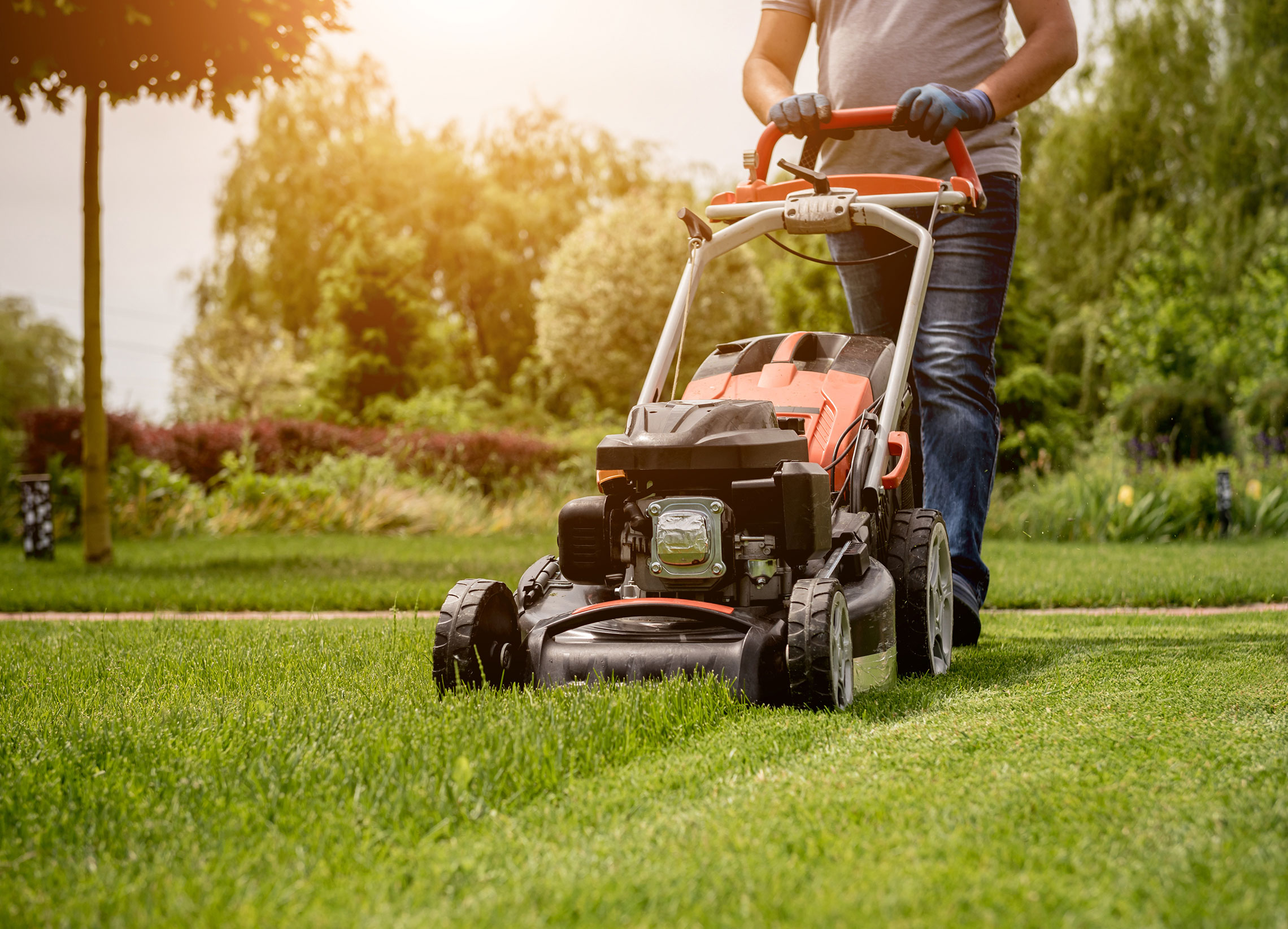No items found.
No items found.
.webp)
As those beautiful autumn leaves start to change, it's also a prime time to give your lawn some focused attention.
Think of it as prepping your green space for the cooler months so it thrives when spring rolls around!
At HG Turf Group, we're here to help you keep your patch looking its best, so here’s a straightforward checklist for autumn lawn care.

While scenic, those lovely autumn leaves can be detrimental if left on your lawn. A thick layer blocks sunlight, reduces air flow, and traps moisture, potentially leading to fungal issues.
Buffalo and Kikuyu lawns are more prone to damage from leaf buildup due to their dense growth habits.
HG Turf Tip: Regularly rake or blow leaves off your lawn. Where autumn leaf fall can be significant, aim to clear leaves at least weekly and more frequently if there are heavy leaf falls.
For Buffalo and Kikuyu lawns, due to their dense growth, more frequent clearing (even multiple times a week) is recommended to prevent matting and fungal problems.
Consider using a mulching mower to finely chop them and return them to the soil as a natural fertiliser, adding valuable organic matter to your lawn.

While growth slows in autumn, your turf still requires mowing. Gradually increase your mower blade height for the cooler months.
Longer grass blades help insulate the soil, protect the plant's crown from frost, and can suppress weed growth.
HG Turf Tip: Continue mowing your grass as needed, gradually raising the cutting height. Ensure your mower blades are sharp for a clean cut, minimising stress and the risk of disease.
Here's a guide to mowing frequency and height for common grass types in Victoria:

Autumn feeding is crucial for building robust roots that can endure the winter.
A balanced autumn-specific fertiliser, typically lower in nitrogen and higher in potassium and phosphorus, will support root development and overall plant health.
HG Turf Tip: To maximise the benefits of autumn fertilising in Melbourne, apply fertiliser in early to mid-April, before soil temperatures drop too low.
This timing allows the turf to absorb nutrients effectively for winter preparation.
When choosing a fertiliser, consider these recommendations for specific grass types:

After the summer activity, your soil might be compacted, hindering the absorption of water and nutrients.
Aeration involves creating small channels in the soil, improving air exchange and root growth.
HG Turf Tip: The best time to aerate your lawn in Melbourne is early autumn, when the soil is often softer from late-summer rains, making the process easier.
Aeration is highly recommended if you notice signs of compaction, such as hard soil or poor drainage.
For compacted clay soils, which are common in Melbourne, core aeration is generally more effective than spike aeration. Core aeration removes small plugs of soil, creating better channels for air and water penetration.
You can hire an aerator or use a manual tool. This is particularly beneficial for high-traffic areas.

Autumn offers ideal conditions for overseeding sparse or bare areas in your lawn. The cooler temperatures and increased moisture promote good seed germination.
HG Turf Tip: Overseeding is particularly beneficial for lawns that have become thin due to heavy foot traffic, pet activity, or summer stress.
Grass types that spread less aggressively, such as Tall Fescue, often benefit most from overseeding to maintain density. Prepare the bare areas by lightly raking the soil. Sow quality grass seed that matches your existing turf type.
For best results, overseed in early autumn to mid-autumn, allowing new seedlings time to establish before cooler temperatures slow growth. Keep the area consistently moist until the new grass establishes

Autumn weeds can become a problem later if not addressed. Taking action now will help prevent them from seeding and spreading.
HG Turf Tip: Identify any weeds present and apply a combination of pre-emergent and post-emergent herbicides.
Pre-emergent herbicides should be applied in early March to prevent winter weeds from germinating; post-emergent herbicides are most effective when applied to actively growing weeds in mid to late April.
Alternatively, manual removal is an option. A healthy, dense natural turf is your best natural defence against future weed issues.

While pest and disease activity usually decreases in autumn, it's still wise to check your lawn for any signs of problems. Early detection allows for timely intervention.
HG Turf Tip: Regularly inspect your lawn for unusual patches, discolouration, or pest activity. Regularly inspect your lawn for unusual patches, discolouration, or pest activity.
When inspecting for pests and diseases, consider the following: Buffalo grass, while generally robust, can be susceptible to lawn grub infestations. Couch grass is relatively pest-resistant but can be affected by mites in dry conditions.
The best time to inspect for pests is often at dusk or after rain, when pests are more active. If you suspect an issue, consult with a local turf specialist or garden store for guidance.

Autumn in Victoria can bring more rainfall. Good drainage is essential to prevent waterlogged soil, which can lead to root rot and other problems.
HG Turf Tip: Address any areas where water tends to pool. Poor drainage can be identified by prolonged puddles after rain, spongy or waterlogged soil, discoloured or thinning grass in certain areas, or a musty smell from the soil.
Proper drainage is crucial for root health leading into winter. Waterlogged soil deprives roots of oxygen, which can lead to root rot, fungal diseases, and weakened turf that is more susceptible to winter damage.
By following this autumn lawn care checklist, you'll be giving your lawn the right care to thrive through the cooler months and be ready for vigorous growth in spring. Remember to select the appropriate products for your specific turf type, and enjoy your healthy green space throughout the season.
For more information or to speak to a turf expert, Contact Us.










